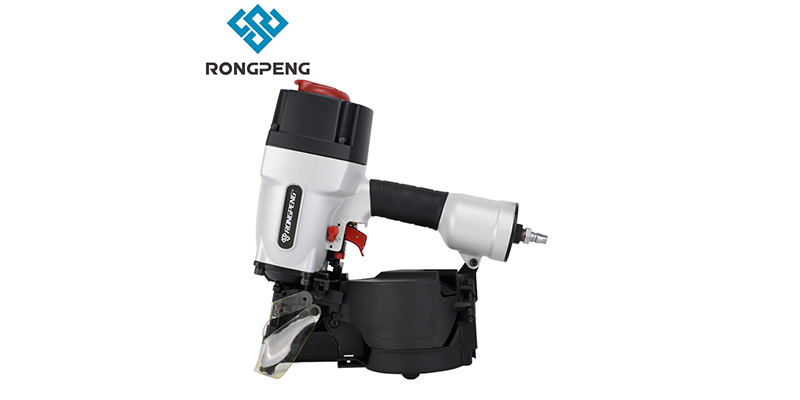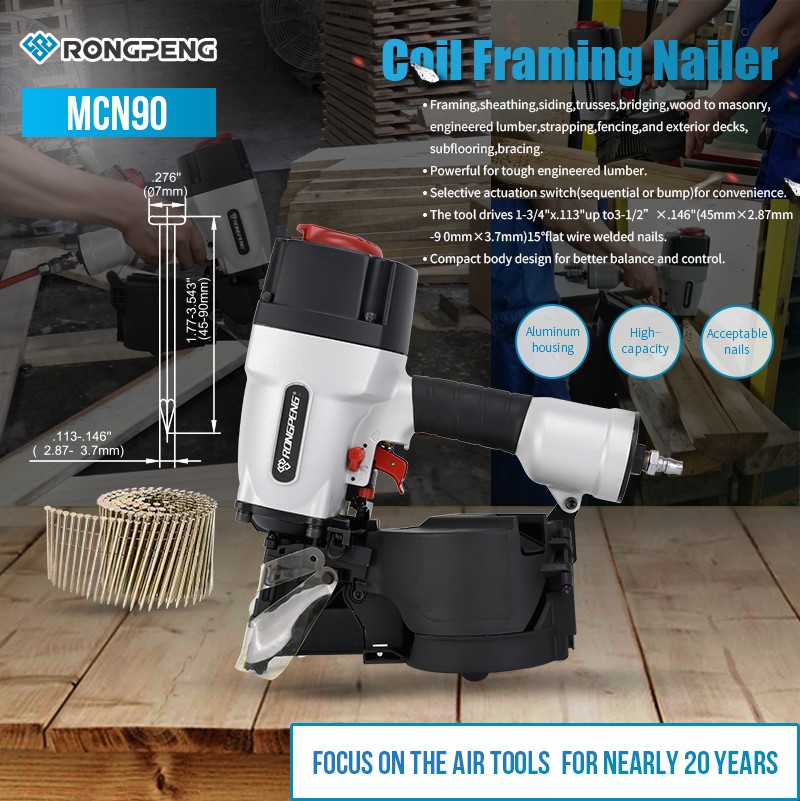

Even the best framing nailers occasionally run into issues that can slow down your productivity. Maybe your nailer keeps jamming or double-firing. Or perhaps the nails don't seem to be driven fully into the wood. We'll explore some of the most common problems with framing nailers and how to keep yours running all day long.
Choosing the Right Nailer for the Job
Not all framing nailers are created equal. They come in different gauges to accommodate nails of varying diameters and lengths. Trying to force too large of a nail into too small of a nailer can cause jams, damage internal components, and create safety hazards. Conversely, using a nailer designed for larger nails with smaller nails provides insufficient driving power.
For typical wood framing with 2x4 or 2x6 lumber, you'll want to use either a 21-degree full-head framing nailer or a 28-degree wire weld nailer, both in the 3-1/4 inch nail length range. The 21-degree nailers use full-head nails with more holding power, while 28-degree nailers use lighter wire nails perfect for framing and sheathing. For framing with larger dimensional lumber like 4x6s, you'll need a framing nailer capable of driving 3-1/2 inch nails or longer.
Getting Flush, Consistent Nailing
Even when your nailer is firing properly, you may still run into issues with the nails not being driven fully flush or consistently into the wood. This sloppy finished look is unacceptable on any professional job.
One potential cause is that you're working with extremely dense hardwoods like oak or bamboo that offer more resistance. In these cases, you may need to increase your nailer's operating pressure to the higher end of its range to generate enough driving force. Too little force and the nails will be proud of the surface.
On the other end, softer woods like cedar can cause overdriven or countersunk nails with too much force applied. Try dialing down the pressure in 5-10 PSI increments until you achieve a clean flush finish.
You'll also want to ensure you are holding the nailer squarely against the wood when firing. Nails driven in at even a slight angle are more likely to be countersunk unevenly. Apply firm pressure to keep the nailer's nose flat on the surface as you pull the trigger.
Finally, inconsistent nail sets can be caused by a dull or damaged driver blade that is failing to transfer full inertia to the nail head. Inspect the blade for excessive wear and consider replacing it if needed. A fresh driver will give your nails a new lease on life.
Handle Nails Properly
Using the wrong nails, or nails that are damaged, can lead to frequent jams and misfires. Always use the exact nail type, angle, and length specified.
Inspect nails before loading and discard any that are bent, deformed, or stuck together. Avoid letting nails get wet, as moisture can cause them to corrode and stick together. Store nails in a dry environment using their original moisture-resistant packaging.
When loading nails into the magazine, be careful not to accidentally drop or spill them, which can damage the nail tips. Load them neatly following any sequence indicated on the magazine cover.
Optimizing Depth of Drive
One of the most important factors in a framing nailer's performance is achieving the proper nail driving depth - not too deep where the nail head damages the wood surface, but not too shallow where it fails to penetrate fully either.
Most quality framing nailers provide tool-free depth adjustment by turning or sliding a dial or wheel on the nose. The ideal depth can vary based on the wood hardness and moisture content. Drier, denser woods like oak will require more force than softer, wetter woods.
Take time to test your depth setting on a scrap piece of the actual framing lumber you'll be using. Make incremental adjustments to the depth dial as needed until the nail heads are driven just slightly below the surface without blowing out the other side.

For homeowners or contractor taking on framing, deck building, fencing, or other construction projects, a good quality RONGPENG MCN90 Coil framing nailer is an essential tool.
Bump firing mold for fast fastening. Available with either sequential and contact fire triggers. Trigger lock-off allows trigger to be disable when not in use. Sets nails properly every time with a tool-free depth of drive with detents.
Use 15 degree 1-3/4" to 3-1/2" wire collated nails. 225Pcs big loading capacity magazine will fasten a full bundle of shingles without reloading. Delivers the power to consistently drive nails in the toughest applications.
 Model:MCN90
Model:MCN90
Dimension:376*356*132mm
Weight:4.25kg(9.35b)
Required pressure:90-110PSI(6.1-7.5bar)
Max.pressure:120PSI(8.3bar)
Nail Capacity:225pcs
RONGPENG has quickly risen to become an unrivaled global producer of air-powered devices including air tools, air spray gun, air nailer, airless paint sprayer, and etc.
RONGPENG seeks independent sales agent to represent and market our industry-leading pneumatic tools. We support OEM, ODM, OBM customization, small order quantity is acceptable and samples are available.
Make any cooperation possible. Any services related to the product, inquire with us now! Rongpeng@Rongpeng.Com